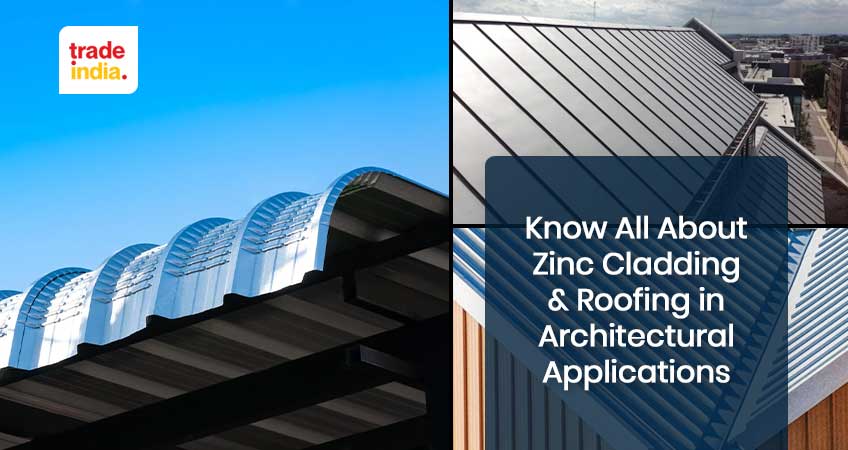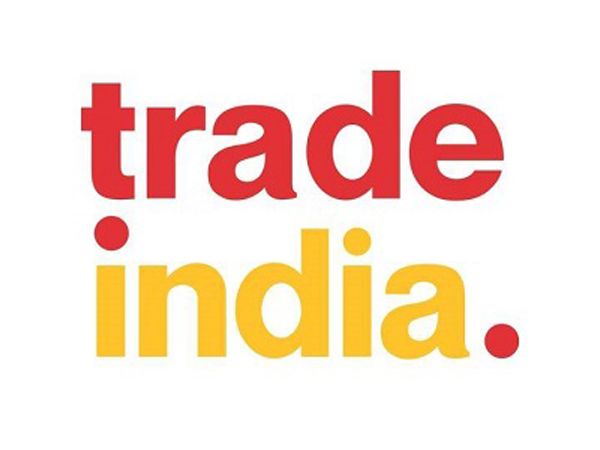Know All About Zinc Cladding & Roofing in Architectural Applications

Zinc is more resilient and affordable than other metals; many architects employ it for roofing. All roofing grades above 5% are ideal for zinc since it is pliable and flexible; zinc sheets are sturdy and durable. These features provide architects with many creative latitudes when designing zinc roofs. Additionally, zinc is frequently used in façade applications to extend the built environment from the rooftop to the walls. The main screen includes cladding with a vented air gap for sustainable performance and includes all facade solutions. They may be arranged either horizontally or vertically and come in straight, curved, and intricate forms. The addition of our domestic zinc countertop and business bars is a recent development. From breakfast buffets to bathroom accessories, zinc offers a spotless surface for various locations in the kitchen and some other parts of the house. These adaptable countertops provide architects and homeowners with high-quality, durable surfaces with a sleek, contemporary appearance.
A total of 30% of the world's zinc output is recycled. Mining and extractive metallurgy are responsible for the remaining 70%. Typically, zinc is recovered as a remnant of copper, lead, and iron, most frequently from sulfidic ore sources. The zinc sulphide ore concentrate is next roasted after the ore has been ground into something of fine dust and floated using froth. Roasting is followed by electrowinning or pyrometallurgy. Around 50% of the energy needed to generate copper, steel, and aluminium from ore is required to make zinc, but only 25% of that energy is needed to make aluminium.
Is Zinc Seen as a Sustainable Product?
Without a doubt, zinc is seen as a sustainable product. The 24th most common element in the crust of the Earth is zinc. It naturally exists in the soil, water, and air. Zinc is present in varying amounts in the majority of rocks and minerals. It is pretty simple to mine in part because it is so plentiful. Being considerably easier to refine than other metals like aluminium, copper, or alloy steels gives zinc a significant sustainability edge over other metals. For instance, just 25% as much energy is needed to manufacture zinc from ore to generate aluminium. Only 50% as much energy are necessary to make copper and steel and then moulded into zinc sheets or other shapes. Often at the end of its service life, zinc is entirely recyclable. Many new goods may be made from recycled zinc since waste has a high metal concentration, not all of which are limited to zinc oxides used for paint, rubber manufacture, and medicinal applications.
What is the Zinc's Lifespan in an Outdoor Environment?
In outdoor settings, zinc typically lasts 80 to 100 years, depending on the use and environment. Among them is zinc used in roofing. Zinc roofs generally survive up to 100 years within remote regions, while zinc structures may endure more than a century. However, outcomes can vary owing to outside variables. Since zinc is most often used in Europe, roofs, gutters, and wall systems have been proven to persist for many generations.
The fact that zinc naturally forms a protecting coating that lengthens its lifespan and enables it to survive harsh environments over decades contributes to its longevity. Through this process, zinc also becomes minimal maintenance over time since the patina causes any defects to "self-heal" or rebuild.
Also, Read - How to Start Roofing Sheet Business in India?
The Advantages of Zinc for Cladding and Roofing in Real Life
Zinc naturally produces a protective coating of zinc-hydroxy-carbonate that ensures corrosion resistance, UV resistance, weatherproofing, and earthquake resistance. In contrast, other metals, like iron, suffer from exposure to water and salt.
The zinc sheet is lightweight and shaped into valuable sizes for quick and straightforward installation. It reduces interior heating and cooling expenditures when utilised effectively by reflecting daytime heat. A zinc roof's rough, slippery surface makes it easy to shed snow or rain when it is exposed to moisture.
Significant environmental and financial advantages come from zinc's ability to be recycled without affecting its physicochemical characteristics: 90–95% of architectural-grade zinc produced is recycled. Zinc's low toxicity makes it possible for water to accumulate on and wash off roofs without endangering the soil or the groundwater supply.
Living Span
Zinc roof sheets have an incredible lifespan of 100 years! Is it not rusting? No, is the response. While zinc is susceptible to corrosion, all metals are. Zinc develops a patina coating as soon as it is near carbon dioxide or oxygen. The zinc roof sheets are shielded from pollution by this layer. Not only that, but the patina layer also helps the roof to recover itself. Every roof eventually develops dents and environmental deterioration. However, this layer naturally and without care fixes these dings and scratches. Not bad, huh? Additionally, zinc reacts relatively little with water. Consequently, maritime settings are suitable for zinc roof sheets.
Eco-Friendly
zinc roof sheets do not harm the environment. With all the discussion on pollution and environmental preservation, zinc roofing seems to be the most excellent choice for a sustainable lifestyle. Because zinc has a low melting temperature and burns with less energy, there is less pollution. Zinc does not discharge non-toxic substances into the environment. In addition, 95% of the zinc may be saved throughout the recycling process if you consider replacing the zinc roof sheets.
Inexpensive
Zinc roofing sheet manufacturers and suppliers will not ask anyone more for shipping since zinc roof sheets are lightweight, manageable, simple to carry, and most importantly, simple to install. The expenditures for repairs and maintenance are minimal other than this. First, zinc architectural items are self-repairing; second, zinc roof sheets are straightforward to maintain. The dirt that collects mainly on these roofing sheets can be removed using a soft cloth.
Zinc's Aesthetic Advantages for Cladding and Roofing
In addition to being beautiful on its own, zinc may be treated with a pre-patinated polish to create various patterns. Just about any roof pitch may be covered with zinc roofing, and specially formed roofing would conform to any curve or angling work. Zinc coating on the walls is pliable and readily moulded into particular forms. It is produced in smooth, worn, or patterned states. Zinc roofing & cladding require essentially minimal upkeep over extended periods.
In the 1960s and 1970s, architects and construction professionals favoured less expensive, "disposable" alternatives to zinc for roofing and cladding, which include asphalt shingles, which frequently need to be replaced every 10 years. Zinc is increasingly gaining popularity as a desirable roofing and cladding material for residential and commercial architectural and building projects because of its environmental friendliness and long-term durability. Hence the popularity of zinc sheets and the rapid uptake of zinc roof sheets in rural and urban areas.
Best Zinc Sheet Manufacturers in India
Shri Balaji Roofing
In India, Shri Balaji roofing, a prominent service provider of decking sheets and air ventilators, was founded in Vadodara, Gujarat, in 2011. Perhaps one of India's approved and reputable names for listed services is Shri Balaji roofing. Using their vast expertise in the air vent platform sheets industry, Shri Balaji Roofing has established a solid reputation for themselves through the market with suitable Rooftop Air Ventilator, FRP Air Ventilators, and other products.
Bhagwati Royal Roof
In India, Bhagwati royal roof, a prominent manufacturer and supplier of roofing systems, was founded in Surat, Gujarat, in 2017. Bhagwati royal roof is one of India's certified and reputable sellers of listed goods. Bhagwati royal roof has built a solid reputation in the market as a zinc sheet manufacturer with high-grade galvanised roofing sheets, coloured roof sheets (blue), commercial roofing sheet/shade, etc., thanks to their vast expertise in selling and manufacturing zinc roofing sheets.
Bhagwati royal roof has a presence across India and serves a sizable client base by focusing on a customer-centric strategy. Buy Bhagwati royal roof's quality-guaranteed metal roofing in bulk at trade India.
Malur Tubes
Under the branded version of Akash Roofing A, Malur Tubes Pvt. Ltd. is a reputable manufacturer and supplier of durable and cutting-edge roofing sheets and goods. Under the brand name MTPL, the company offers a wide selection of steel tubes, steel tubes, and other items. They have a production facility in Bangalore, India, where they fabricate and distribute various roofing sheets, including metal roofing plates, MS roofing sheets, commercial rooftop sheets, pre-painted rooftop sheets, galvanised roofing sheets, and others.
Zinc Sheet Price
Zinc sheet price varies based on size and usage; generally, for commercial purposes, it starts from INR 550 and can go up to INR 5000.
Conclusion
Several design alternatives are available for businesses wishing to repair and maintain their commercial roofing system. Metal roof cladding is a common and efficient alternative for many commercial and industrial facilities, thanks in large part to the variety of materials available, including copper, various kinds of steel, and aluminium. Zinc roof cladding is one choice for industrial roofing that might not come to mind immediately, but so many industrial roofers already include this style of cladding in their most recent projects
FAQs: Zinc Sheet
Q. Is zinc suitable for use in roofing?
Ans: Copper, zinc, and steel roofs are excellent roofing materials that offer you years of protection, need little upkeep, and enhance your property's aesthetic.
Q. What benefits does zinc cladding offer?
Ans: Zinc claddings are superior elongation and tensile strength along with longer and narrower core holes. So, sections with thin walls are possible—smaller angles of release.
Related Blogs:
